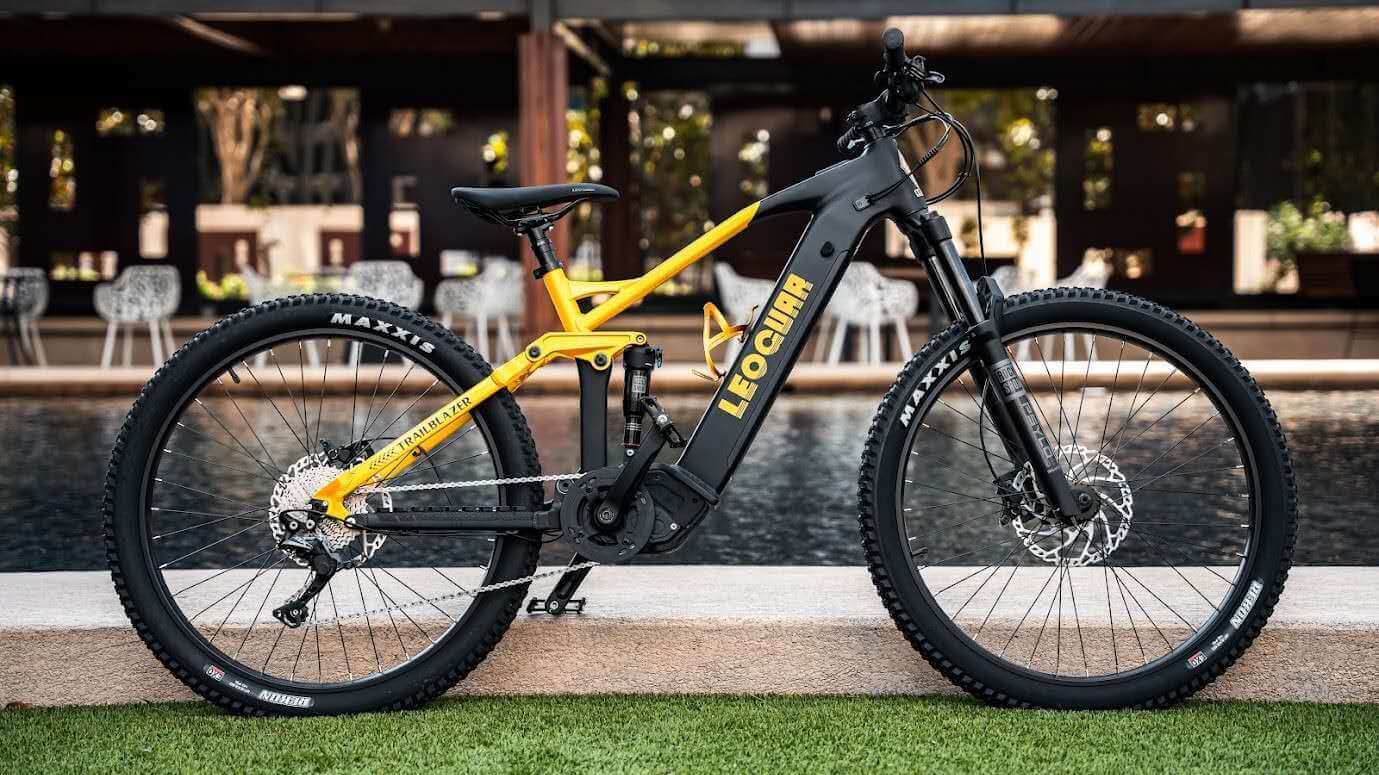
What Ebike Is Best for Me? Find the Best Electric Bike for Beginners or Experts
Wondering what ebike is best for me? Choosing the best electric bike depends on your riding style, budget, and where you plan to go. It’s all about matching the features to your daily use, so you can really answer what ebike is right for me in real life. This guide shows beginners and experts how to pick an e-bike that truly fits.
The e-bike boom is here. From fat tires to folding frames, hub motors to mid-drives, the options can feel overwhelming. It's easy to get lost in technical specs and marketing hype. But let's cut through the noise. The most common question we hear is "what ebike is best for me?" The honest answer is simple: it depends entirely on you.
The purpose of this guide is to give you a clear, step-by-step framework to find your perfect ride. We won't just tell you what to buy. We will help you build a personal rider profile, understand what features truly matter for your needs, and see how your experience level shapes your ideal choice. By the end, you'll be able to answer that question with confidence.
5-Step Guide: How to Decide What Ebike Is Best for Me
Before you even look at a single bike model, you need to understand your own needs. This self-assessment is the key to filtering out the noise and focusing on what matters. Grab a pen or open a note on your phone and let's build your e-bike profile.
Step 1: What's Your Primary Use Case?
Your main riding purpose is the first filter when deciding what ebike is right for me and why. Be honest about what you'll do 80% of the time. Are you looking for a machine for daily commuting to work or school? Is this for leisurely weekend rides and fitness? Do you need to haul groceries or kids in a child seat? Or are you planning to hit gravel paths and light trails? An e-bike designed for rugged trails will feel clunky on a city commute. A simple commuter may not be suitable for hauling heavy loads. Defining your primary purpose is the first and most critical filter. It’s the very first clue when asking what ebike is best for me — because your use case shapes everything else.
Step 2: Where Will You Ride?
Think about your typical terrain. Will you be navigating mostly flat, paved city streets and bike paths? Or does your area involve big hills that will require more motor power and better gears? Perhaps you live where you'll encounter a mix of pavement and gravel roads. The terrain directly influences the type of motor, tires, and suspension you should prioritize. And terrain is one reason many people wonder what ebike is best for me when choosing between a hub motor or mid-drive. Riding on hills all day with a weak hub motor is a frustrating experience you can easily avoid.
Step 3: How Far and How Often?
This question is all about e bike battery range. Do you need a bike for short, daily trips of 5-10 miles? A smaller, lighter battery will work fine for this. Or are you dreaming of long, 30+ mile weekend adventures where a large-capacity battery is non-negotiable? Consider not just the distance of one trip, but also how often you're willing to charge the battery. If you plan to ride daily, a larger battery means you might only need to charge it a couple of times a week. Battery range is a big factor for riders searching what ebike is best for me when planning distance and frequency.
Step 4: What's Your Budget Reality?
E-bikes are an investment, and prices vary widely. It's helpful to set a realistic budget. If you’re wondering what are the best electric bikes for the money, think about what features truly matter for your rides and skip paying extra for hype you don’t need. Knowing what is best ebike for the money means balancing features you really need with the price you’re willing to pay.
Entry-level (under $1,500): At this price, you'll typically find hub motors, basic disc brakes, and simpler parts. These are great for basic commuting and leisure on flatter terrain.
Mid-range ($1,500 - $3,000): This is the sweet spot for many riders. You'll find better components, hydraulic disc brakes, and often the option of a more refined mid-drive motor. These bikes offer great performance and reliability for daily use.
Premium (over $3,000): Here, you're paying for high-end, lightweight components, powerful and efficient mid-drive systems, larger batteries, and advanced features. This level suits those answering what ebike is best for me if you want top-end specs and don’t mind paying more for performance. These bikes are for enthusiasts and those who demand the best performance and ride feel.
Step 5: What's Your "Hassle" Tolerance?
This relates to assembly and maintenance. Are you comfortable with assembling a bike that arrives in a box from a direct-to-consumer brand? Or do you prefer the peace of mind that comes from buying a professionally assembled bike from a local shop? Consider your mechanical skills and how much you value ongoing, in-person support.
Okay, here's an example of a Quick Check Table that you can insert directly at the beginning of a 5-Step Self-Assessment paragraph or above the Beginner vs Expert table, in a style that fits the existing tone of your article exactly, and can be copied directly:
| Main Need | Best Ebike Type |
|---|---|
| Daily commuting in the city | Hub motor city ebike with upright posture |
| Weekend leisure & fitness | Comfort-oriented hub motor or hybrid ebike |
| Gravel or adventure trails | Mid-drive motor hybrid or EMTB |
| Hauling cargo or heavy loads | Fat tire utility ebike with strong motor |
| Long-distance touring | Mid-drive trekking ebike with big battery |
| All-around value on a budget | Folding or fat tire hub motor ebike |
This snapshot helps you quickly answer “what ebike is best for me?” in a minute.
What Really Matters When Choosing the Best Ebike for You
With your rider profile in hand, you can now start to understand the technical specs that will meet your needs. When people ask what is a good electric bike, the answer is always about the essentials: the right motor, battery, and fit. Here's what actually matters.
Motor Type: Hub vs. Mid-Drive
This is one of the biggest differences in how an e-bike feels. Knowing the motor style helps settle the question what ebike is best for me if you care about power delivery and terrain.
| Feature | Hub-Drive Motor | Mid-Drive Motor |
|---|---|---|
| Location | In the center of the front or rear wheel. | At the bottom bracket, where the pedals are. |
| Best For | Flatter terrain, budget-conscious buyers. | Hilly terrain, performance, natural ride feel. |
| Ride Feel | Feels like you are being "pushed." | Feels like your own pedaling power is amplified. |
| Pros | More affordable, simpler system. | More efficient, better for climbing, balanced weight. |
| Cons | Can feel less natural, makes changing a flat tire harder. | More expensive, can put more wear on the drivetrain. |
E-Bike Classes: 1, 2, and 3
In the U.S., e-bikes are generally categorized into three classes. These dictate their speed and how the motor engages.
Class 1: The motor provides pedal-assist only (no throttle) and stops assisting at 20 mph.
Class 2: The motor can be activated by a throttle and can power the bike up to 20 mph without pedaling. It can also have pedal-assist.
Class 3: The motor provides pedal-assist only up to 28 mph. These are often called "speed pedelecs."
In short, the difference between a class 2 and class 3 electric bike is that a class 2 allows throttle use up to 20 mph, while a class 3 only uses pedal-assist up to 28 mph with no throttle.
It is crucial to check your local regulations on e-bike classes. Some bike paths and trails may have restrictions, often limiting access to Class 1 e-bikes only.
Battery Life (Range)
Manufacturers often give optimistic range estimates. It’s one of the top specs riders look at when wondering what ebike is best for me for daily or long trips. The real-world range of an e-bike is affected by rider weight, terrain, wind, and especially the level of assist you use. The best metric for comparing battery capacity is Watt-hours (Wh). You can calculate this by multiplying Volts (V) by Amp-hours (Ah). As a general rule, a typical 500Wh battery will provide a realistic 25-50 miles of range depending on these factors. For long commutes or hilly areas, look for a battery with 500Wh or more.
Brakes: The Safety Non-Negotiable
E-bikes are heavier and faster than traditional bikes. This means they require better brakes. You'll see two main types:
Mechanical Disc Brakes: These use a steel cable to activate the brake caliper. They are effective and easier to service but require more hand strength and frequent adjustment.
Hydraulic Disc Brakes: These use fluid in a sealed line to activate the brake. They provide far more stopping power with less effort, are more responsive, and self-adjust as the pads wear.
For the added performance of an e-bike, we strongly recommend hydraulic disc brakes. The extra control and safety they provide warrant the extra stopping power.
Beginner vs. Expert: Find What Ebike Is Best for Me
Your experience level dramatically changes what you should look for in an e-bike. This isn't about "good vs. bad" features. It's about matching the bike's characteristics to your comfort and skill.
We find that many beginners initially want a throttle (Class 2), but quickly grow to love the natural feel of a good pedal-assist system. It makes you feel bionic, rather than like you're on a scooter. Experts, on the other hand, often prioritize a system that feels like an extension of their own body.
Here's how priorities differ:
| Feature | What a Beginner Should Look For | What an Expert Prioritizes |
|---|---|---|
| Power Delivery | Smooth, predictable acceleration that builds confidence. A gentle start from a stop is key. | Responsive, high-torque power that delivers instantly for climbing or accelerating out of corners. |
| Weight | A manageable weight is helpful, but stability and comfort are often more important. | A lighter overall system for a more agile, "bike-like" feel. May accept more weight for more power or range. |
| Components | Reliability and low maintenance are paramount. A simple, durable drivetrain like Shimano Altus is perfect. | High-performance components with a wider gear range for efficiency, like Shimano Deore or better. May consider a belt drive for low maintenance. |
| Adjustability & Fit | An upright, comfortable riding posture with an adjustable stem and a comfortable saddle. | Performance-oriented geometry for efficiency and speed. Expects to customize components like the saddle, grips, and handlebars for a perfect fit. |
| Maintenance | Simplicity and strong brand support. Buying from a local bike shop for service is a huge plus. | Comfortable performing their own maintenance, tuning, and adjustments. Values ease of serviceability for DIY work. |
This quick compare helps explain what you really need. It’s a smart shortcut for deciding what ebike is best for me at your skill level.
Our Picks by Profile: Good Electric Bikes for Beginners & Experts
Now, let's apply this framework to some real-world examples. Based on your self-assessment, find the profile that matches you best.
For the "City Commuter" Beginner
Your focus is on reliability, comfort, and utility for getting around town. You need a bike that's easy to ride and comes ready to go.
Bike Type: A Class 1 or 2 commuter with an upright riding position, a reliable hub motor, and included accessories.
Why it works: An upright posture is comfortable in traffic, a hub motor provides simple and effective power for city streets, and included fenders and a rear rack make it practical for all-weather commuting and carrying essentials.
Example Models: Bikes like the Leoguar Flippo or Aventon Level are popular for a reason. They deliver great value and functionality for this purpose. Finding in-depth reviews of commuter bikes from trusted sources like Wirecutter can confirm reliability. That’s why city riders often ask what ebike is best for me for short trips and errands.

For the "Versatile Adventurer" Intermediate
You want one bike that can do a bit of everything—from daily commutes to weekend explorations on bike paths and gravel trails.
Bike Type: A Class 3 hybrid with a quality mid-drive motor and a larger battery.
Why it works: A mid-drive motor provides the torque needed for hills and a more natural feel for longer rides. The Class 3 speed (28 mph assist) makes longer commutes faster, and the hybrid design is capable on both pavement and light trails.
Example Models: Look at versatile options like the Leoguar Fastron or Specialized Turbo Vado. These are known for their blend of performance and comfort.
For the "Performance-Focused" Expert
You are an experienced cyclist who wants an e-bike that complements, not replaces, your effort. You value ride feel, low weight, and high-quality components.
Bike Type: A lightweight performance hybrid or e-road bike with a sophisticated, efficient mid-drive motor.
Why it works: These bikes prioritize handling and a responsive feel. The motors are designed to be smooth and unobtrusive, and the high-end components ensure crisp shifting and powerful braking. They feel more like an acoustic bike, but with a welcome boost on climbs.
Example Models: Brands like Leoguar Trailblazer, Specialized, and Trek offer high-performance models. Expert publications often praise bikes with integrated systems, as seen in Bicycling's Best Overall e-bike selections.
For the "Budget-Conscious Utilitarian"
You need a functional, no-frills e-bike that gets the job done without breaking the bank. Function and value are your top priorities.
Bike Type: A direct-to-consumer folding or fat-tire bike with a hub motor.
Why it works: These bikes offer incredible utility for their price. Folders are great for multi-modal commutes or small apartments, while fat tires provide a stable, comfortable ride over potholes and varied surfaces. The value proposition is hard to beat.
Example Models: Brands like Leoguar Sprint have built a reputation for delivering capable and affordable e-bikes that serve a wide range of practical needs.
Our Best E-Bike Choice: Make the Right Decision
Ultimately, what is the best e bike to get comes down to your needs — it isn’t always the most expensive one or the one with the biggest motor. When riders ask what’s the best e-bike for me, the honest answer is that it always depends on your real-world needs, not just the price tag. It's the one that aligns with the rider profile you just built. It's the bike that fits your primary use case, your terrain, your budget, and your comfort level.
By taking the time to assess your needs first, you've empowered yourself to look past the marketing and focus on the features that will genuinely improve your riding experience. You now have the tools to compare models, understand the trade-offs, and make an informed decision. The perfect e-bike is waiting for you—it's the one that makes you want to get out and ride. And once you know what ebike is best for me, you’ll enjoy every mile more.
Frequently Asked Questions
1. What is the most important factor when choosing an e-bike?
The most important factor is your primary use case. Before looking at any technical specs, be honest about what you'll do 80% of the time with your e-bike. Whether it's daily commuting, weekend leisure rides, hauling cargo, or trail riding will determine the type of motor, battery capacity, and frame design you need.
2. Should I choose a hub motor or mid-drive motor for my first e-bike?
For most beginners, a hub motor is a great choice because it's more affordable, simpler to maintain, and provides smooth power delivery. However, if you live in a hilly area or want a more natural riding feel, a mid-drive motor is worth the extra cost as it provides better climbing power and weight distribution.
3. How much should I expect to spend on a good electric bike?
Good electric bikes typically start around $1,500 for entry-level models with basic components. The sweet spot for most riders is the $1,500-$3,000 range, which offers better components, hydraulic brakes, and more refined motors. Premium models over $3,000 are for enthusiasts who want the best performance and features.
4. What is the real-world range I can expect from an e-bike battery?
Real-world range depends on many factors including rider weight, terrain, wind, and assist level used. A typical 500Wh battery will provide 25-50 miles of realistic range. Manufacturers often give optimistic estimates, so it's best to expect the lower end of their claimed range for real-world use.
5. Do I need hydraulic disc brakes on an e-bike?
Yes, hydraulic disc brakes are strongly recommended for e-bikes. Since e-bikes are heavier and faster than traditional bikes, they need more stopping power. Hydraulic brakes provide better control, require less hand strength, and offer more consistent performance than mechanical disc brakes, making them a worthwhile safety investment.
6. How do I know what ebike is best for me?
Use this 5-step guide to match your daily riding style, terrain, budget, and comfort needs. No matter your experience, you’ll know what ebike is best for me with confidence.



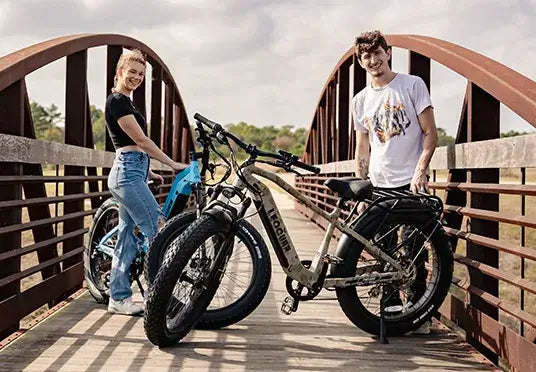
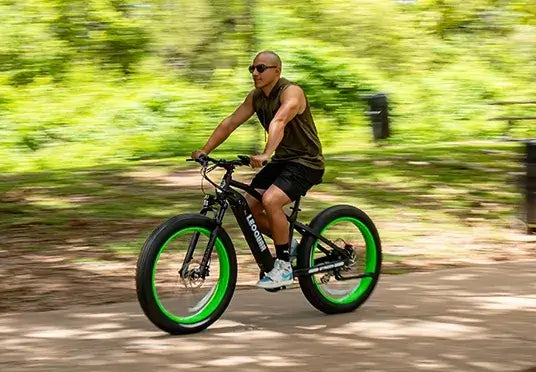
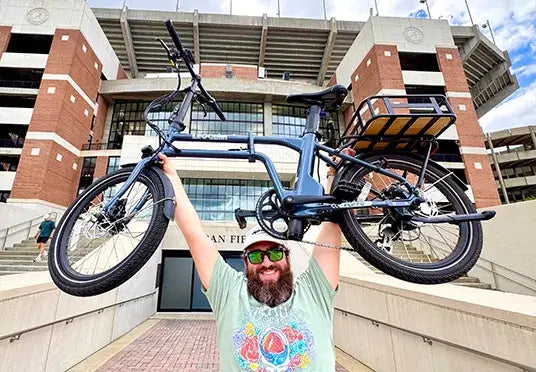
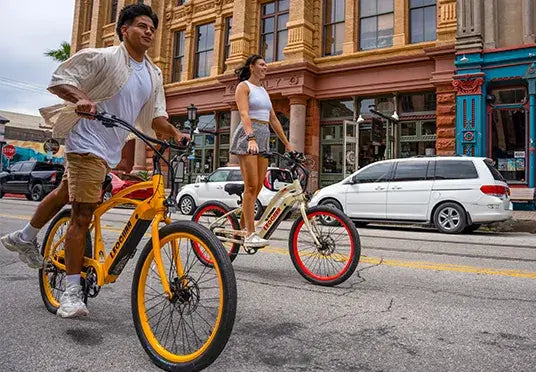
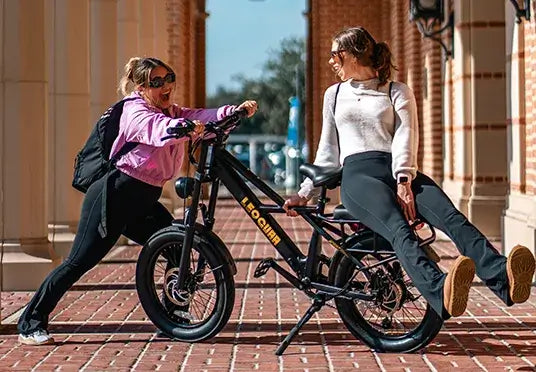
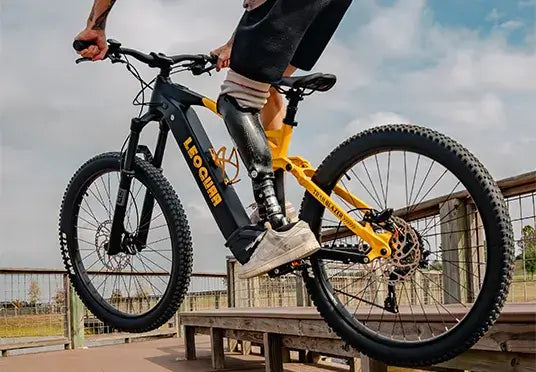
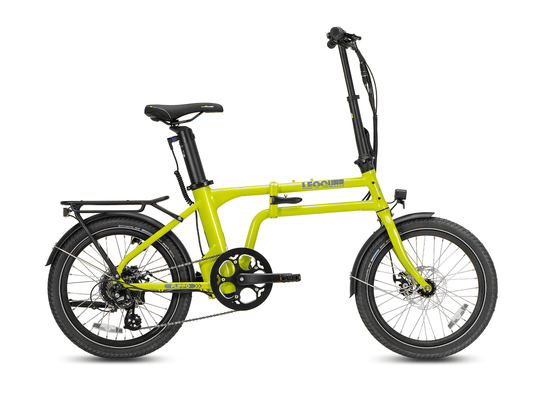
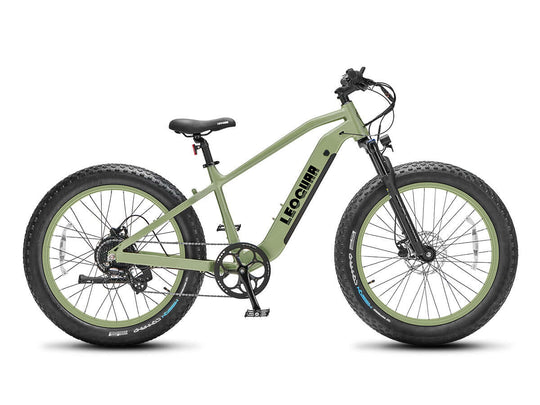
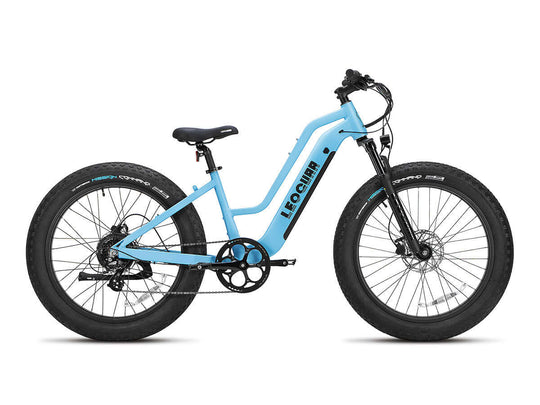
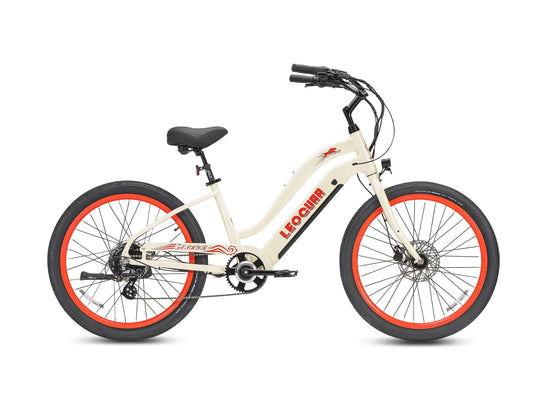
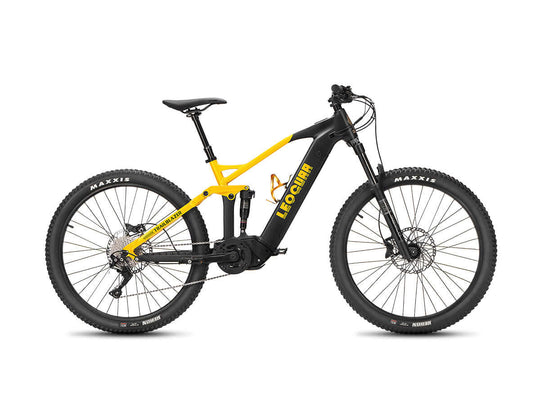
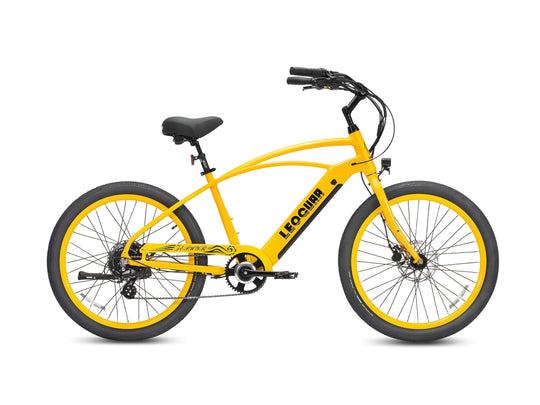
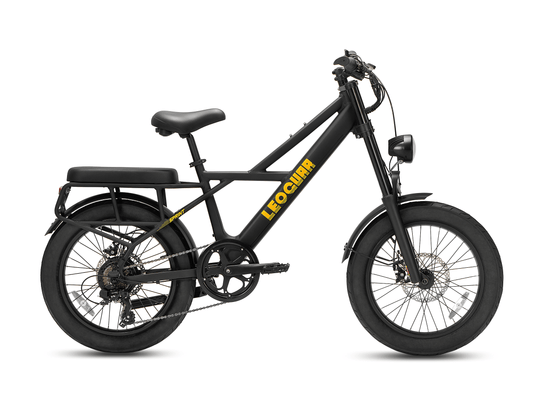
















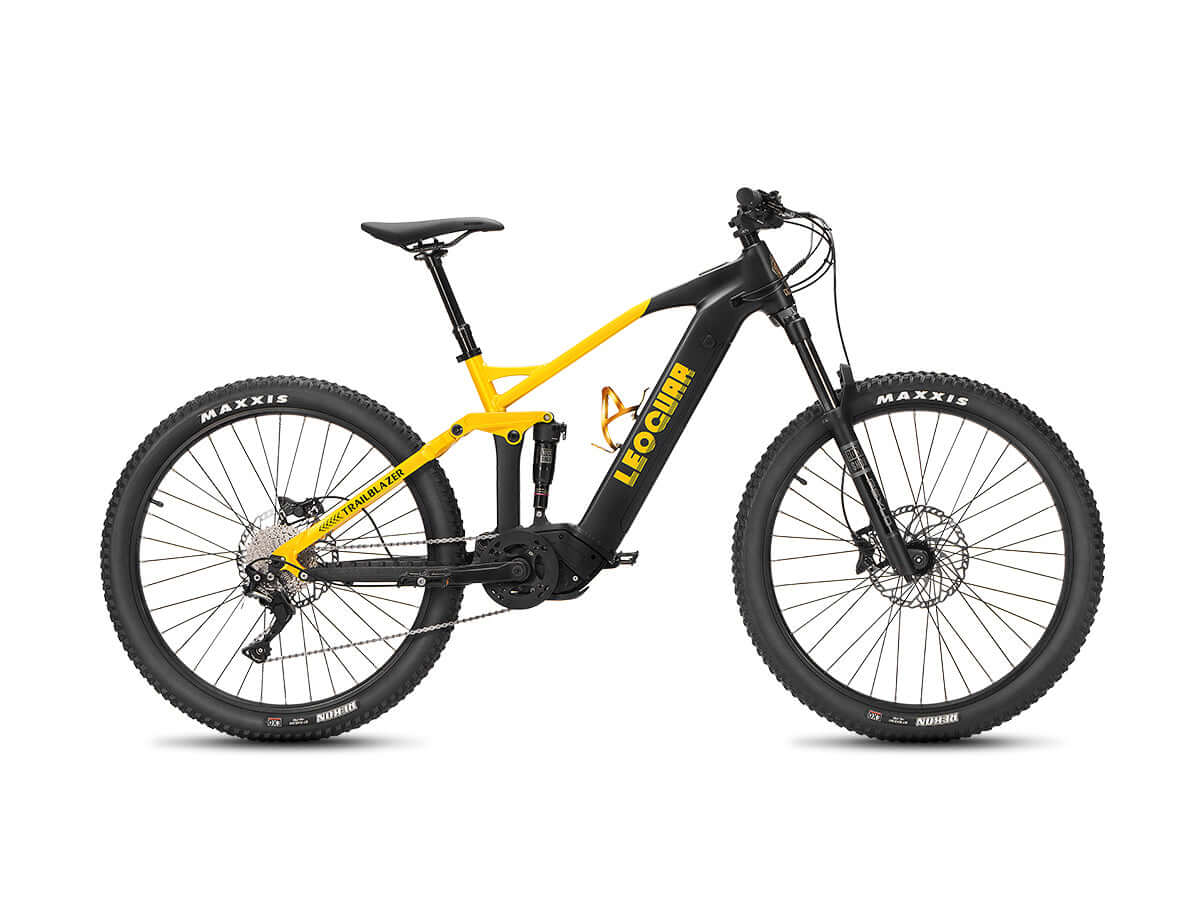








Leave a comment